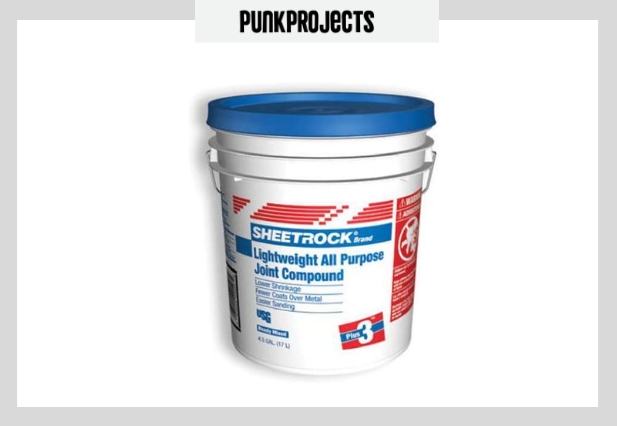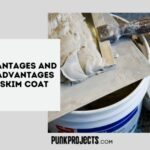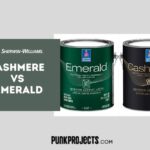Advantages And Disadvantages Of Skim Coat and considering skim coating over your walls to give them a smooth and polished finish? Before taking the plunge, it’s important to understand the advantages and disadvantages of skim coating.
This article will provide you with an in-depth look at the benefits and drawbacks of this process, so you can make an informed decision. You won’t want to miss out on these details!
What is Skim Coat

Skim coat is a type of plastering technique used to smooth out and level uneven surfaces on walls or ceilings. It consists of a thin layer of material, usually made up of cement, water, and sand mixture that is applied over the surface with a trowel. This technique is commonly used in both residential and commercial construction projects to prepare surfaces for painting or wallpapering.
The skim coat application results in a smooth, uniform surface that can enhance the overall appearance of any room. It effectively hides any imperfections such as cracks, holes or rough patches left behind from previous wall treatments like textured paint or wallpaper. Skim coating also helps to increase the durability and longevity of painted surfaces by providing a solid base for paint adhesion.
Advantages Of Skim Coat
Skim coat, also known as a thin finish, is a type of plaster used to create an even, smooth surface. It is typically applied over drywall or plaster in order to cover any minor imperfections and prepare the surface for decoration. Skim coating is a job that can often be done by a DIYer and are favored due to the many advantages they offer over traditional drywall techniques.
Advantages of Skim Coat:
- Smooths out imperfections: Skim coating is an effective way to smooth out minor imperfections in a wall or ceiling. It can help to cover up small cracks, bumps, and other surface irregularities, creating a smooth, even surface for painting or wallpapering.
- Enhances appearance: A well-executed skim coat can enhance the appearance of a room, making it look more polished and professional. It can also help to brighten up a space by reflecting light more evenly.
- Improves adhesion: Skim coating can help to improve the adhesion of paint or wallpaper to a surface. By creating a smooth, even surface, it allows the paint or wallpaper to adhere more evenly and last longer.
- Increases durability: Skim coating can help to increase the durability of a surface by creating a strong, smooth finish. This can help to prevent damage from scratches, dents, and other types of wear and tear.
- Can be used for repair: Skim coating can be used to repair minor damage to a wall or ceiling, such as small holes or cracks. It can also be used to cover up old wallpaper or paint, creating a fresh, new surface.
- Versatile: Skim coating can be used on a variety of surfaces, including drywall, plaster, and concrete. It can also be used to create different textures, such as a smooth or slightly textured finish.
Disadvantages Of Skim Coat
Skim coating your walls, or using a thin layer of joint compound to create a smooth finish with no visible seams, is popular in construction and remodeling projects. While it can be a great way to create a new look in your home, there are some downsides to consider as well.
- Time-consuming: Skim coating can be a time-consuming process, especially for larger surfaces. It requires multiple layers of plaster or joint compound to be applied, each of which needs to dry before the next layer can be added. This can make the project take several days or even weeks to complete.
- Requires skill: Skim coating requires a skilled hand to achieve a smooth, even finish. If done incorrectly, the surface can end up looking wavy, lumpy, or otherwise uneven.
- Messy: Skim coating can be a messy process, as the plaster or joint compound needs to be mixed and applied to the surface. This can result in dust and debris that needs to be cleaned up afterward.
- Can be expensive: Skim coating can be an expensive process, especially if you hire a professional to do the job. The cost of the materials and labor can add up quickly, making it less practical for some homeowners.
- Not suitable for all surfaces: Skim coating is typically used on walls and ceilings made of drywall or plaster. It may not be suitable for other materials, such as brick or concrete.
- Limited thickness: Skim coating can only be applied to a thickness of about 1/8 inch, which may not be enough to correct severe surface imperfections. In such cases, a thicker layer of plaster or joint compound may be needed, which can be more difficult to apply and may require additional preparation work.
Best Skim Coat
there are several well-known brands that offer quality skim coat products, including:
USG Sheetrock Brand

USG Sheetrock offers a variety of skim coat products, including joint compound and setting-type compounds that are easy to apply and sand, providing a smooth finish.
DAP

DAP Wallboard Joint Compound is a type of joint compound used for finishing drywall. It is a pre-mixed, lightweight, and easy-to-apply compound that is ideal for repairing, smoothing, and finishing drywall joints, nail holes, and corner beads.
Beadex

Beadex Joint Compound is a type of joint compound used for finishing drywall. It is a pre-mixed, easy-to-use compound that is designed for professionals and DIY enthusiasts alike. Beadex Joint Compound is made by CertainTeed, a leading manufacturer of building materials and construction products.
Is skim coating worth it?
Skim coating is the process of applying a thin layer of thinned down joint compound or drywall mud to an existing wall to smooth out irregularities, cover blemishes and also provide a strong adhesive surface for the paint.
This process can be very time consuming, so it pays to know if it’s worth the effort before you begin. To help you make this decision, let’s take a look at both the advantages and disadvantages of skim coating.
What is the purpose of skim coating a wall?
Skim coating involves applying a thin layer of joint compound or drywall mud to a wall. It is done for a few different reasons which include smoothing out rough spots on the wall, closing up small imperfections or holes, creating an overall even surface before painting and preparing the walls for wallpaper installation.
The process itself involves attaching a heavy-gauge pole to your mud pan, putting your joint compound in the pan and then using firm pressure with your tools while bringing them up the wall in vertical strokes so that the mud is evenly spread on the wall’s surface.
Is skim coat good for concrete?
Yes, skim coating can be a good option for concrete surfaces, especially if you want to create a smooth, even surface for painting or other types of finish. Skim coat, also known as a cement or polymer finish plaster, is a type of thin-layer concrete overlays used to smooth and level the concrete surface. It is usually applied with a trowel and can be used interior and exterior surfaces.
Is A skim coat waterproof?
A skim coat is not a waterproof coating on its own, as it usually includes materials like joint compound or plaster. However, a waterproofing agent or sealant may be applied to the skim coat after it has been applied and dried to create water-resistant or waterproof coating.
Waterproofing properties are typically achieved by using special additives in the plaster or stucco mix or using multiple coats of a special sealer over the top of the completed project.
For exterior surfaces that will be exposed to moisture and weathering, additional steps should be taken to ensure that the skim coat is both waterproof and also durable enough to withstand wear and tear over time.
I am a multi-talented designer and contractor with over 10 years of experience in the field. I have a passion for creating beautiful, innovative spaces that reflect my clients’ needs and styles. My skills include architectural design, interior design, space planning, project management and construction supervision.






